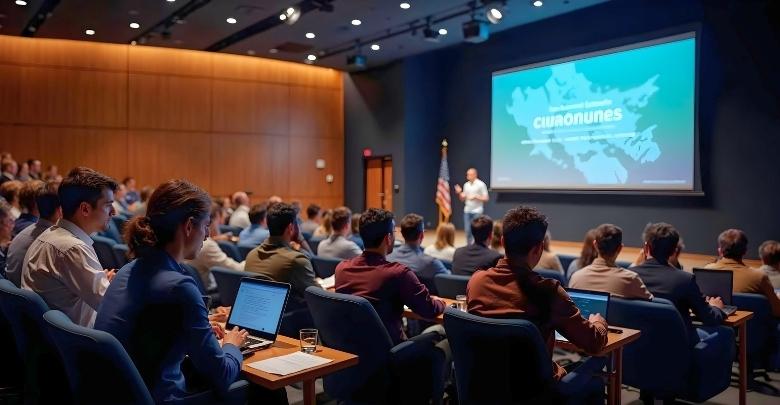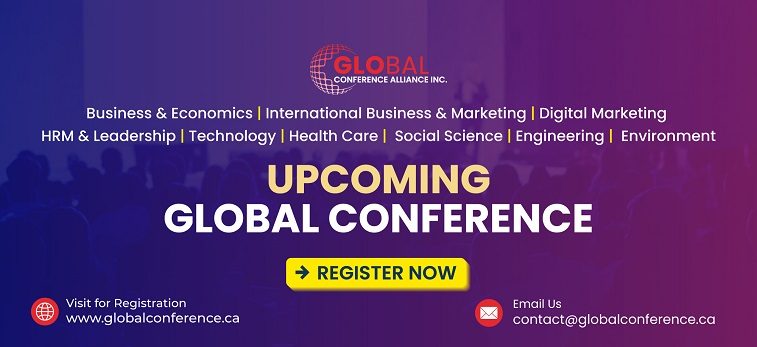Environmental conferences are essential for creating collaboration and innovation in addressing global ecological challenges. They bring together experts, activists, and policymakers to share insights and explore solutions. If you’re attending one, you might be asking: What to do at an environment conference?
To make the most of an environment conference, focus on preparation, active participation, and networking. Attend key sessions, engage in discussions, and explore exhibitions. Take notes, ask questions, and connect with like-minded individuals to ensure a productive and meaningful experience.
Are you curious about how to maximize your time at an environment conference? Keep reading to discover detailed tips and strategies to make the most of these impactful events and contribute to positive change in the process.
Why Attending Environment Conferences Are Worth Your Time?
Environment conferences are vital for supporting collaboration, innovation, and action toward addressing global ecological challenges. These events bring together experts, policymakers, and enthusiasts to share insights, discuss pressing issues, and explore sustainable solutions. Whether you’re a professional or simply passionate about environmental conservation, these conferences offer outstanding opportunities to learn and grow.
Attending such events allows participants to engage in thought-provoking discussions, gain access to the latest research, and network with like-minded individuals. The collaborative atmosphere inspires new ideas and partnerships, helping attendees contribute to positive change in their communities and industries.
Among the different countries, Canada has become a hub for impactful environmental conferences, attracting global leaders and innovators. Attending international environmental conferences in Canada provides an opportunity to engage with innovative solutions and global perspectives, making the country a key destination for those looking to strengthen sustainability efforts and explore meaningful advancements in environmental practices.
What to Do at an Environment Conference?
Environment conferences can be valuable and exciting experiences. To make the most of it, you should approach the event with a clear plan and an open mind. Here are key activities you can focus on to maximize your learning and engagement.

Prepare Before the Conference
Preparation is crucial to ensure a smooth and productive experience. Review the conference agenda and identify sessions, workshops, or speakers you don’t want to miss. Familiarize yourself with the venue, session timings, and any special events planned. Preparing questions or discussion topics beforehand can also help you engage more effectively with other attendees.
Attend Keynote Sessions
Keynote speeches are often the highlight of environment conferences, featuring leading experts in the field. These sessions provide insights into the latest research, global trends, and innovative solutions for pressing environmental issues. Pay close attention to the main points and take notes to explore further after the session.
Join Interactive Workshops
Workshops provide hands-on learning opportunities and a chance to explore deeper into specific topics. They often focus on practical applications, such as conservation strategies, renewable energy solutions, or community engagement techniques. Participating actively in workshops allows you to learn new skills and gain insights that can be applied to your work or personal efforts.
Network with Other Attendees
Networking is one of the most important aspects of attending a conference. Take advantage of breaks, social events, and informal gatherings to connect with like-minded individuals. Engaging in conversations with other participants can lead to valuable collaborations, knowledge sharing, and professional growth.
Visit Exhibition Booths
Exhibition areas at environment conferences showcase the latest innovations, technologies, and initiatives in the field. Take time to explore these booths to learn about new products, tools, or organizations contributing to environmental solutions. These displays often provide inspiration and resources for advancing sustainability efforts.
Ask Questions and Participate in Discussions
Engage actively during Q&A sessions or group discussions to deepen your knowledge of the topics being presented. Asking thoughtful questions demonstrates your interest and can spark valuable dialogues with speakers or other attendees. This interaction helps you build connections and improves your overall learning experience.
Reflect and Plan Next Steps
After the conference, take time to reflect on what you’ve learned and how you can apply it. Review your notes, identify actionable insights, and plan follow-up actions, such as connecting with new contacts or implementing ideas discussed during sessions. This ensures the knowledge you’ve gained translates into meaningful impact.
The purpose of attending an environment conference goes beyond listening to speakers. You can transform the experience into a turning point for personal and professional growth while contributing to environmental progress by preparing, engaging, and following up effectively.
What to Expect at an Environmental Conference?
The experience of attending an environmental conference can be transformative, providing opportunities to learn, connect, and take concrete steps to improve sustainability. Here are some key aspects you can expect when participating in such an event.
Inspiring Keynote Speeches
Keynote speeches are a highlight of environmental conferences, often delivered by leading experts, policymakers, or activists. These sessions set the tone for the event, offering thought-provoking insights into pressing environmental challenges. Expect to hear about innovative solutions and global trends that inspire action and broaden your perspective of the field.
Engaging Panel Discussions
Panel discussions provide a platform for diverse voices to explore complex environmental issues. Experts from different backgrounds share their perspectives on topics like climate change, conservation, and renewable energy. These sessions are interactive, with opportunities for attendees to ask questions and contribute to the dialogue, enhancing the learning experience.
Interactive Workshops and Activities
Workshops at environmental conferences are designed to provide hands-on experience in tackling real-world problems. These sessions allow participants to collaborate on case studies, simulations, or skill-building exercises. Through these activities, attendees can learn from environmental conferences about practical strategies and tools to apply in their work or community initiatives.
Networking Opportunities
Networking is a central aspect of any environmental conference, offering a chance to meet like-minded professionals and advocates. Expect dedicated networking sessions, casual meet-and-greets, and social events where you can exchange ideas and build relationships. These connections often lead to collaborations and projects that extend beyond the conference.
Exhibitions Showcasing Innovations
Many environmental conferences include an exhibition area featuring the latest in sustainable technology, research, and initiatives. Companies, organizations, and startups display their contributions to environmental solutions, providing attendees with valuable insights and resources. Exploring these booths can spark inspiration and inform your approach to sustainability.
Opportunities to Share Your Voice
Environmental conferences encourage active participation, whether through Q&A sessions, roundtable discussions, or even presenting your work. Being part of these conversations allows you to share your ideas and learn from others’ experiences. Engaging in these forums ensures a richer, more meaningful conference experience.
Environmental conferences are a blend of learning, networking, and inspiration. By attending, you can immerse yourself in a dynamic environment where knowledge and action converge to encourage meaningful change.
How Can You Participate in an Environmental Conference?
Participating in an environmental conference offers an opportunity to contribute to meaningful discussions and increase your knowledge. From active engagement to personal preparation, here are key ways to ensure a rewarding experience.
Register and Plan Ahead
The first step to participating in an environmental conference is registering early and reviewing the event schedule. Look for sessions and workshops that align with your interests or expertise. Planning ensures you make the most of the event, allowing you to prioritize the activities that will provide the greatest value.
Join Sessions and Ask Questions
Actively attending sessions, panels, and keynotes is a key part of conference participation. Listen attentively and take notes to retain valuable insights shared by experts. Don’t hesitate to ask questions during Q&A segments, as this not only deepens your awareness but also helps you engage with the speakers and other attendees.
Contribute to Discussions and Forums
Many conferences include interactive forums, breakout sessions, or group discussions where participants can share their thoughts and experiences. Use these opportunities to voice your perspectives and learn from the experiences of others. Being an active participant enriches the conference for everyone and promotes meaningful dialogue.
Network with Other Attendees
Networking is one of the most valuable aspects of an environmental conference. Introduce yourself to other attendees during breaks, meals, or social events. Building relationships with like-minded professionals, researchers, and advocates can lead to collaborations and long-term connections in the field.
Volunteer or Present Your Work
Another way to actively participate is by volunteering or presenting your research or projects. There are various ways to join an environmental conference, such as becoming a speaker, exhibitor, or session facilitator. These roles provide a platform to showcase your contributions, enhance your professional reputation, and create new opportunities.
Engage with Exhibitors and Innovations
Explore the exhibition area to learn about new technologies, research, and initiatives showcased by organizations and companies. This hands-on engagement provides insights into the latest advancements in environmental solutions and can inspire innovative ideas for your projects or work.
Participating in an environmental conference is more than just attending sessions. By engaging actively, networking effectively, and contributing your voice, you can maximize the impact of your experience while making meaningful contributions to the event.
Tips to Maximize Your Environmental Conference Experience
An environmental conference is a great opportunity to learn and meet new people. With a few simple tips, you can make the most of your time and experience. Here are some practical tips to help you get the most out of your participation.
- Plan Your Schedule: Review the conference agenda and prioritize sessions, workshops, and keynotes that align with your interests or goals. Having a plan ensures you don’t miss important discussions and allows you to manage your time effectively.
- Set Clear Objectives: Decide what you want to achieve from the conference, whether it’s networking, learning new skills, or exploring specific topics. Clear goals help you stay focused and make the most of the opportunities available.
- Engage Actively in Discussions: Participate in Q&A sessions, forums, and breakout groups to share your thoughts and gain insights from others. Active engagement upgrades your learning and makes your presence felt.
- Network Purposefully: Use breaks and networking sessions to connect with like-minded individuals, industry leaders, and potential collaborators. Prepare a concise elevator pitch to introduce yourself and your interests effectively.
- Take Notes and Reflect: Jot down key takeaways from sessions and discussions to review later. Reflection helps solidify your learning and allows you to identify actionable insights that can be applied in your work or community.
- Visit Exhibitions and Booths: Explore the exhibition area to discover new technologies, research, and initiatives. These interactions often provide valuable resources and inspiration for tackling environmental challenges.
- Be Open to New Ideas: Stay open-minded and receptive to diverse perspectives and innovative solutions presented at the conference. This attitude promotes learning and broadens your knowledge of environmental issues.
- Follow-Up After the Event: After the conference, connect with people you met via email or LinkedIn and review your notes. Following up keeps the momentum going and helps turn connections into meaningful collaborations.
FAQs
Environment conferences offer numerous opportunities to learn, connect, and contribute to sustainable solutions. Here are some frequently asked questions to help you explore and make the most of your time at these impactful events.
How Can You Balance Learning and Networking at a Conference?
Balancing learning and networking requires a strategic approach. Prioritize attending key sessions for knowledge and dedicate breaks or social events to building connections. Carry a business card or digital contact details to ensure follow-up opportunities with new acquaintances.
What Should You Wear to an Environment Conference?
Wear comfortable, professional attire suitable for long days and varied activities. Depending on the event, business casual is often ideal. Comfortable shoes are essential if the conference involves walking or exhibitions. Always check the dress code specified in the event guidelines.
How Do You Make the Most of Informal Gatherings at a Conference?
Informal gatherings are great for meaningful conversations. Be approachable and open to engaging with others. Introduce yourself confidently, listen actively, and share relevant experiences. These casual settings often lead to deeper connections and long-term professional relationships.
What Is the Best Way to Follow Up After Meeting Someone at a Conference?
Send a personalized email or connect on LinkedIn within a few days of the event. Mention specifics from your conversation to make the interaction memorable. Following up promptly helps solidify the connection and opens doors for future collaborations.
How Can You Stay Engaged During Long Sessions?
To stay engaged, take notes to retain key points and ask questions to interact with speakers. Short breaks between sessions are ideal for refreshing your focus. Stay hydrated and manage your energy to maximize your productivity throughout the day.
Final Thought
The experience of attending a conference on the environment can be transformative if you approach it with intention. From engaging in sessions to networking with peers, the key lies in preparation and active participation. Now, you know exactly what to do at an environment conference to maximize its benefits.
To improve your experience, prioritize meaningful connections, stay open to learning, and reflect on actionable insights after the event. With these steps, you’ll not only grow personally but also contribute to sustainable progress. Best wishes as you make the most of this opportunity and drive positive change!







